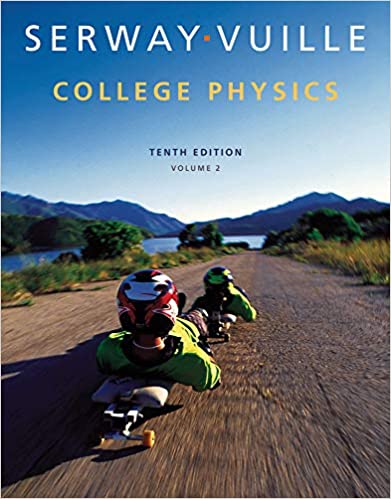
College Physics 10th Edition by Raymond Serway,Chris Vuille
Edition 10ISBN: 978-1285737041
College Physics 10th Edition by Raymond Serway,Chris Vuille
Edition 10ISBN: 978-1285737041 Exercise 74
Assume a length of axon membrane of about 0.10 m is excited by an action potential (length excited = nerve speed 3 pulse duration = 50.0 m/s × 2.0 × 10 3 s = 0.10 m). In the resting state, the outer surface of the axon wall is charged positively with K + ions and the inner wall has an equal and opposite charge of negative organic ions, as shown in Figure P18.41. Model the axon as a parallel-plate capacitor and take C = k 0 A / d and Q = C V to investigate the charge as follows. Use typical values for a cylindrical axon of cell wall thickness d = 1.0 × 10 8 m, axon radius r = 1.0 × 10 1 µm, and cell-wall dielectric constant k = 3.0. (a) Calculate the positive charge on the outside of a 0.10-m piece of axon when it is not conducting an electric pulse. How many K + ions are on the outside of the axon assuming an initial potential difference of 7.0 × 10 2 V Is this a large charge per unit area Hint: Calculate the charge per unit area in terms of electronic charge e per squared (Å 2 ). An atom has a cross section of about 1 Å 2 (1 Å = 10 10 m). (b) How much positive charge must flow through the cell membrane to reach the excited state of +3.0 × 10 2 V from the resting state of -7.0 × 10 2 V How many sodium ions (Na + ) is this (c) If it takes 2.0 ms for the Na + ions to enter the axon, what is the average current in the axon wall in this process (d) How much energy does it take to raise the potential of the inner axon wall to +3.0 × 10 2 V, starting from the resting potential of 7.0 × 10 2 V
Explanation
(a)
Use the following formula to calcula...
College Physics 10th Edition by Raymond Serway,Chris Vuille
Why don’t you like this exercise?
Other Minimum 8 character and maximum 255 character
Character 255


